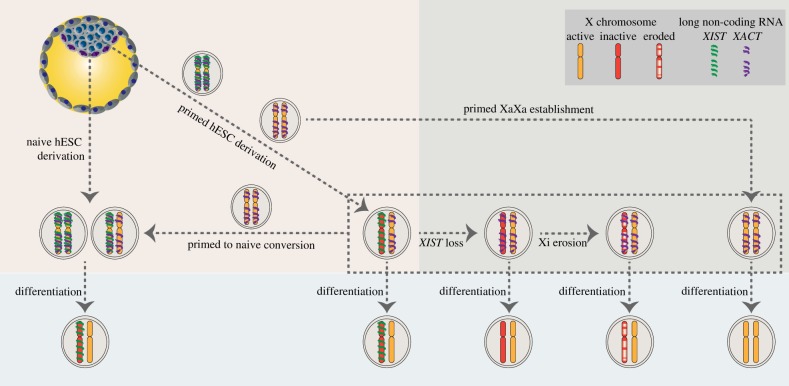Figure 2.
X-chromosome states of human pluripotent stem cells. The X chromosome state of conventional (primed) hESCs differs from the ICM of human pre-implantation blastocysts from which they are derived. Primed hESCs are in a post-XCI state with an XIST-coated Xi. Over time in culture, the Xi loses expression of XIST and partially reactivates, undergoing XCI erosion. Primed hESCs with two active X chromosomes can also be derived from ICM outgrowths (far right), potentially capturing an intermediate state of the X chromosome in the transition to XCI. Differentiation does not change the X-chromosome state of any of these primed hESCs. When hESCs are derived from the blastocyst under naïve culture conditions, or when primed hESCs, regardless of their X state, are converted to naïve pluripotency, the X-chromosome state resembles that of the blastocyst, with two active X chromosomes and XIST expression (on one or both X chromosomes). Like normal development, differentiation of naïve hESCs induces XCI. Similar to primed hESC derivation, an XIST-negative state with two active X chromosomes is an intermediate in the primed to naïve hESC conversion, suggesting stepwise reversal of events. The lncRNA XACT is co-expressed with XIST in naïve pluripotency and might be responsible for inhibiting XIST-mediated silencing. XIST and XACT occupy non-overlapping territories on the active X chromosome (green and purple) in naïve hESCs. XACT is also expressed in primed hESCs both from active and eroding/eroded X chromosomes, and it might be driving erosion by interfering with XIST expression or accumulation. XACT is not expressed in differentiated cells.

